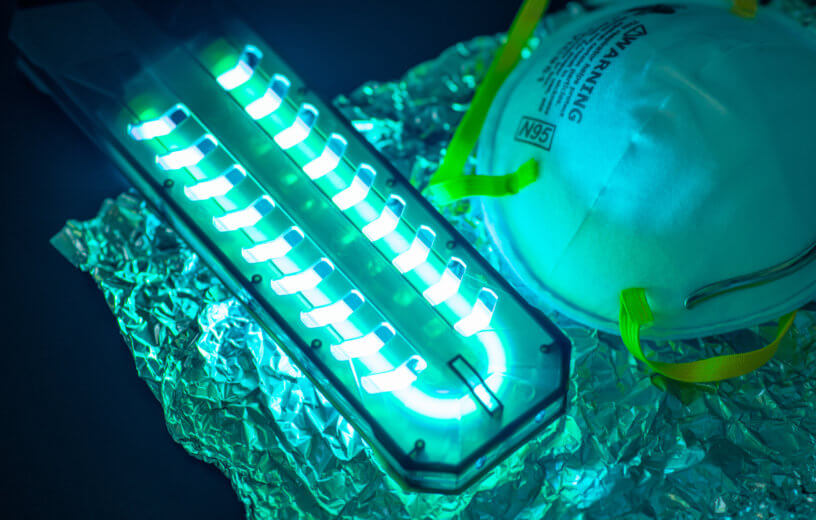UNIVERSITY PARK, Pa. — Phone, keys, wallet…ultraviolet light device. Just in case you wanted yet another item to carry around all day, researchers say that portable, handheld ultraviolet light devices capable of killing COVID-19 may be a reality in the future. These gadgets would emit high-intensity ultraviolet light and quickly disinfect targeted areas.
There are two main ways to clean and remove bacteria and viruses from a given surface: chemicals and ultraviolet (UV) radiation exposure. UV radiation between 200 and 300 nanometers can effectively kill a virus and stop it from replicating itself. Obviously, devices emitting UV rays would come in handy these days due to COVID-19, but as of now such devices require an expensive, bulky mercury-containing gas discharge lamp with a short battery life.
The study’s authors, however, believe that much more portable, longer lasting, energy efficient, and environmentally friendly UV light emitting diodes can be developed. The necessary LEDs already exist, but the process has been complicated by the fact that electrode materials must also be transparent.
“You have to ensure a sufficient UV light dose to kill all the viruses,” says Roman Engel-Herbert, Penn State associate professor of materials science, physics and chemistry, in a release. “This means you need a high-performance UV LED emitting a high intensity of UV light, which is currently limited by the transparent electrode material being used.”
Attaining transparent electrode materials has already proven difficult for smartphones and LED lighting, and researchers say it is even harder when it comes to ultraviolet light.
“There is currently no good solution for a UV-transparent electrode,” explains Joseph Roth, doctoral candidate in Materials Science and Engineering at Penn State. “Right now, the current material solution commonly employed for visible light application is used despite it being too absorbing in the UV range. There is simply no good material choice for a UV-transparent conductor material that has been identified.”
So, the team at Penn State, in collaboration with researchers from the University of Minnesota, decided to seek out a new material with a suitable composition. Right away they zeroed in on a newly discovered class of transparent conductors: a material called strontium niobate. After obtaining some samples of strontium niobate from Japan, the research team tested the material as a UV transparent conductor.
“We immediately tried to grow these films using the standard film-growth technique widely adopted in industry, called sputtering,” Roth notes. “We were successful.”
“While our first motivation in developing UV transparent conductors was to build an economic solution for water disinfection, we now realize that this breakthrough discovery potentially offers a solution to deactivate COVID-19 in aerosols that might be distributed in HVAC systems of buildings,” he concludes.
Besides just personal use, UV light devices can conceivably be used to disinfect large public areas like parks, theaters, buses, and subways.
The study is published in Physics Communications.
Like studies? Follow us on Facebook!
